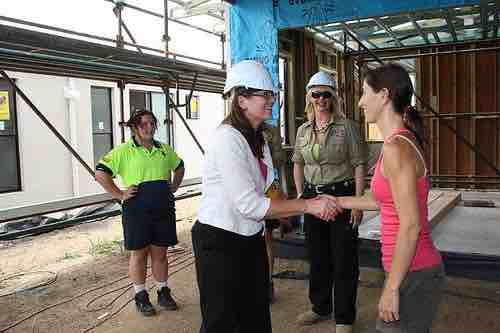Historically, the division of labor has been organized along gender lines. Gender roles - a set of social and behavioral norms about what is considered appropriate for either a man or woman in a social or interpersonal relationship - have affected the specialization of work in both agricultural and industrial societies.
A number of factors over the past few decades have resulted in women entering and flourishing in a variety of different professions. Despite the enormous progress women around the world have made in pursuing careers, there remain significant obstacles women confront in the workplace. The glass ceiling and occupational sexism reflect the restrictions on women as they try to enter and rise in the ranks of the workforce . While occupational sexism and the glass ceiling will be explored in the section 'Inequalities of work," what follows is a discussion of barriers to equal participation in the work force, including access to education and training, access to capital, network discrimination and other factors.
Access to Education and Training
A number of occupations became "professionalized" through the 19th and 20th centuries, gaining regulatory bodies and requiring particular higher educational requirements. As women's access to higher education was often limited, this effectively restricted women's participation in these professionalizing occupations. For instance, women were completely forbidden access to Cambridge University until 1868, and were encumbered with a variety of restrictions until 1987 when the university adopted an equal opportunity policy. Numerous other institutions in the United States and Western Europe began opening their doors to women over the same period of time, but access to higher education remains a significant barrier to women's full participation in the workforce. Even where access to higher education is formally available, women's access to the full range of occupational choices can be limited.
Access to Capital
Women's access to occupations requiring capital outlays is also hindered by their unequal access (statistically) to capital; this affects individuals who want to pursue careers as entrepreneurs, farm owners and investors. Numerous micro-loan programs attempt to redress this imbalance, targeting women for loans or grants to establish start-up businesses or farms. For example, while research has shown that women cultivate more than half the world's food, most of the work is family subsistence labor, with family property often legally owned by men in the family.
Network Discrimination
Part of the problem keeping women out of the highest paying, most prestigious positions is that they have historically not held these positions. As a result, recruiters for high-status jobs are predominantly white males, and tend to hire similar people in their networks. Their networks are made up of mostly white males from the same socio-economic status, which helps perpetuate their over-representation in the best jobs.
Other Social and Structural Factors
Through a process known as "employee clustering," employees tend to be grouped both spatially and socially with those of a similar status job. Women are no exception and tend to be grouped with other women making comparable amounts of money. They compare wages with women around them and believe their salaries are fair because they are average. Some women may be unaware of just how vast the inequality is.
Furthermore, women tend to be less assertive and confrontational than men. Some have suggested that one of the factors contributing to the higher proportion of raises going to men is the simple fact that men tend to ask for raises more often than women, and are more aggressive when doing so. Women and me are socialized at young ages into these roles. School-age boys and girls have been noted as enacting the same aggressive and passive characteristics in educational settings that we see in adults in the workplace.
An additional issue that contributes to income inequality by gender is that women are much more likely than men to take "breaks" in their careers to have children (due to personal choice or as a result of circumstances). When a woman in this scenario re-enters the workforce, she may be offered a smaller salary or a lower position that she might have merited had she remained in the workforce.

Working Women
The Women into Building Housing Showcase is an Australian project designed to promote women in the construction business. The Building Housing Showcase site was constructed by an all-female team.